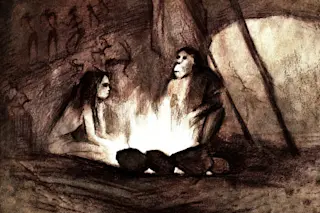Scientists keep prying into the sex lives of Neanderthals. In the past decade, they’ve revealed that Neanderthals got busy with both Homo sapiens and Denisovans, another lineage of now-extinct humans.
But there’s more: Mounting evidence suggests Neanderthals also had a habit of inbreeding, or conceiving with close relatives. Several studies have now reported this based on genetic patterns and bone abnormalities thought to result from intra-family flings.
First, let’s review the facts behind these claims of consanguinity, or mating between relatives. Then let’s consider the consequences: How did inbreeding impact Neanderthal health and survival?
(Credit: Pretty Vectors/shutterstock)
Pretty Vectors/shutterstock
Neanderthals are a branch of the human family tree that inhabited Europe and Central Asia between 40,000 and 230,000 years ago. Since the first Neanderthal bones were discovered over 150 years ago, researchers have learned much about their lifestyles, technologies and evolutionary history.
The first strong case of Neanderthal inbreeding came ...














